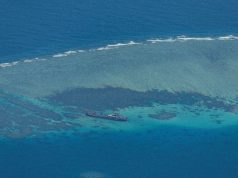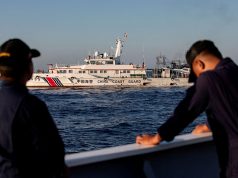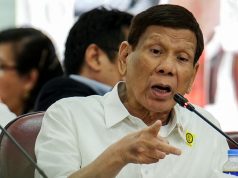
MANILA — Philippine President Rodrigo Duterte has announced he will retire from politics, opening the way for his daughter to run for president in next year’s election.
Here is a timeline of some of the key events in Duterte’s term:
May 2016: Duterte, the former mayor of Davao City and nicknamed “The Punisher” for his anti-drug crusade in the city, is elected the Philippines‘ 16th president by focusing almost entirely on crime, drug abuse and corruption.
Once in power, Duterte backs a war on drugs by police that officials say kills more than 6,100 suspected drug dealers. The United Nations say tens of thousands of people in the Philippines may have been killed since mid-2016 amid “near impunity” for police and incitement to violence by top officials. Duterte’s spokesperson says the “rehashed claims” of impunity are unfounded.
October 2016: On his first trip to China, Duterte turns his back on the Philippines‘ decades-long ties with the United States to court Beijing, announcing the separation from the United States by saying “America has lost”.
Duterte says Manila and Beijing would resolve their South China Sea dispute through dialogue, a softening of the previous Philippine position. He describes the 2016 arbitration ruling on the South China Sea that went in the Philippines‘ favor as just a “piece of paper” he could throw in the trash.
May 2017: Duterte cuts short a visit to Moscow when clashes erupt in Marawi between Filipino troops and Islamist fighters. The seige of Marawi lasts five months. By September, the conflict has displaced around 350,000 people and resulted in the deaths of more than 1,000. Duterte declares a state of martial law covering the entire island of Mindanao, which lasts until the end of 2019, the longest period of martial law in the Philippines since the 1965-86 Marcos era.
July 2017: Under the government’s “Build, Build, Build” initiative, Duterte pledges to usher in a golden age of infrastructure through a six-year, $180 billion spending spree to modernize and build airports, roads, railways and ports.
February 2018: The International Criminal Court (ICC) opens a preliminary investigation into the thousands of deaths that occurred during Duterte’s war on drugs. The following month, Duterte announces his intention to withdraw the Philippines from the ICC. The withdrawal becomes official in March 2019.
May 2019: Elections result in Duterte maintaining his hold on the House of Representatives and see him take control of the Senate, the only effective check remaining on his administration.
January 2020: Duterte says he will end a 1998 pact that allows U.S troops to operate in the Philippines, however the withdrawal period is extended. In February 2021, he says the U.S. must “pay” to keep the deal and in July he restores it.
READ: Duterte fully restores key troop pact with United States
Sept. 8, 2021: Duterte accepts his party’s nomination to run for vice president in next year’s election. He is barred by the constitution from seeking a second term and his interest in the largely ceremonial post is dismissed by opponents as a bid to stay in office and avoid potential legal action against him. A prosecutor at the International Criminal Court is still investigating Duterte over his war on drugs.
Oct. 2, 2021: Duterte announces he will not run for vice president but will retire from politics.
RELATED: Duterte says he is retiring from politics
—Reporting by Michael Perry; Editing by Christopher Cushing








